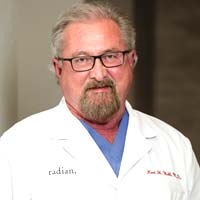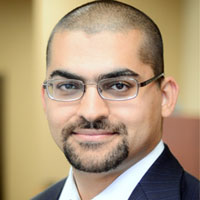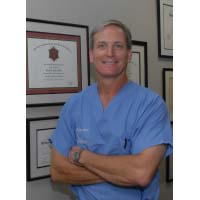Best Hair Transplants in New Jersey
In a society such as ours hair, is considered a crowning glory which
accentuates the looks of the face. Many a poet have described a person’s
hair as a sheath or flowing tresses. The thought of going bald or
losing excessive hair is a nightmare. Some people just don’t do anything
and take baldness in their stride. But nowadays thanks to a plethora of
solutions, people including celebrities opt for drastic solutions.
Where topical remedies, medicines, hair-care products have failed hair
transplant stands tall as a successful solution.
New Jersey a buzzing
metropolis and close to the Big Apple caters to this mane need. It has
several well-known and experienced doctors who excel in the art of
re-growing hair on our barren scalps. Clinics vie with one another
delivering services like Microfollicular Hair Transplantation (MHT),
Follicular Unit Extraction (FUE) and Punch Hair Matic.
Dr. Gregory A. Pistone
Dr. Gregory A.
Pistone ensures that a person’s own hair is regrown and patients leave
with the satisfaction that their hairlines and hair look natural. The
doctor promises personal care and his restorative hair surgery is made
possible by state-of-the-art technologies like Stereo-Microscopic Hair
Transplantation.
Dr. Pistone is double board-certified in both
Surgical Hair Restoration and Dermatology and is recognized by the
International Alliance of Hair Restoration Surgeons. He promises shorter
recovery time with safe solutions that give permanent healthy hair.
Dr. Herbert S Feinberg
Dr.
Herbert S Feinberg is the founder dermatologist of The Dermatology
Center in Eaglewood, NJ and well trained in creating naturally occurring
follicular unit grafts. Follicular Unit hair Transplant (FUT) is his
forte. He takes care to do less than 1500 grafts in a session to hasten
hair growth with a small donor scar. Author of the book “All About Hair”
Dr. Feinberg is a board certified dermatologist and a fellow of the
American Academy of Dermatology besides others.
Besides the
FUT
technique he offers
ARTAS Robotic Hair Restoration procedures which is
less invasive with no scalpel incision, stitches or staples or linear
scar. High quality restoration with faster healing are other advantages.
Dr. Ayman El Attar
Dr. Ayman El Attar recommends Minoxidil (Rogaine) a topical solution
and Finasteride (Propecia) an oral medication to hasten hair growth. For
best results however, a combination of medicines and hair transplant
surgery is advised by him. He specializes in hair loss treatments for
women also. He offers online consultation also besides other remedies
where surgery is not feasible.
He uses the technique of Ultra
Refined Follicular Unit Hair Transplantation where recipient wounds are
minimized although more grafts are moved in a session to ensure a
natural look which is better than using micrografts (1-2 hairs), and
mini-grafts (3-6 hairs).
Dr. John Schwinning
A certified Diplomat of the American Board of
Hair Restoration Surgery,
Dr. John Schwinning is a proud recipient of
hair transplant procedures himself. He lays great emphasis on the design
of the hairline which has to match a patient’s own natural hairline.
The success of a transplant leans heavily on the artistic qualities of
the surgeon. As the frontal hairline frames the face it has a bearing on
a person’s looks. Artistic ability to design and create a hairline that
is natural is more important considering the present age of the patient
and the future, he says.
Hairfear
Frequently asked questions about hair transplant procedures
How much does a hair transplant cost?
Hair transplants can vary in price based off of the area in the world that you are interested in getting a hair transplant as well as the size of the area where you may need a hair transplant. Experienced doctors in the United States will often charge some of the highest prices for a hair transplant worldwide and this is why so many travelers make the move to other parts the world like Turkey, India, Thailand, Mexico...etc for their hair transplants.
Will a hair transplant hurt?
Although hair transplants may look like a particularly
unpleasant or painful experience is actually very little discomfort involved
with the surgery itself. Hair transplants are always done under an anesthetic so there's absolutely zero pain during the treatment itself. Many people actually relate the process as being very similar to going to the dentist for filling or root canal. Mild pain can persist over the course of postop treatment but he generally just resumes for a few days.
Who can deliver the best surgery?
It's usually best to consider working with surgeons who have and IAHRS certification or international alliance of hair restoration surgeons recognition. IAHRS can often deliver recommendations for the best surgeons in each particular area.
Is this scarring noticeable?
Any type of hair transplant will require the use of incisions throughout the scalp. There can also sometimes be a small scar from the donor area towards the back of the scalp. Asking to look at photos of the surgeon's previous work will help you to see roughly how bad the scarring could be. In most cases an experienced professional can limit the look of scarring and noticeable marks from the surgery.
How long does it take for the hair to grow?
In most cases hair growth will start within eight months and you can start to see a full effect from the hair transplant after a full year. The initial signs of growth can usually start between 3 to 4 months after the surgery.
Are the results permanent?
The hair follicles that are transplanted are generally the ones which are genetically resistant against the symptoms of baldness. As long as you receive hair loss treatment later in your life after the symptoms of balding have started to subside, you can have a better chance at permanent results.
While everyone know you've had surgery?
If you want to limit the chance that people may find out about your surgery it's important to give at least three weeks of healing as the surgical area will be affected and red just after surgery. After around a month of healing it can look far less noticeable. You could consider wearing a hat while time passes or opting for some extra time off if possible.
How long should I rest after surgery?
It's recommended to rest for at least a few days after surgery so that your body can recover. Trenton to over exert yourself and limit sexual activity, running in the gym for around 10 days after surgery.
Is it possible to lose more hair as a result of surgery?
There is always a chance of shock loss which happens when the hair is weak and miniaturizing after the surgery. As long as the surgeon is choosing the correct hair follicles and performing the surgery well it's possible to minimize the chance of this happening however.
Will I need another hair transplant?
The need for another transplant really depends on the individual. With a solid foundation surgery and working to potentially bolster results with drug therapy, you can improve the stability of the hair that was transplanted as well as prevent further loss. Getting a hair transplant early
on in your 20s or early on in life could lead to needing long-term transplants as hair loss can be progressive.







